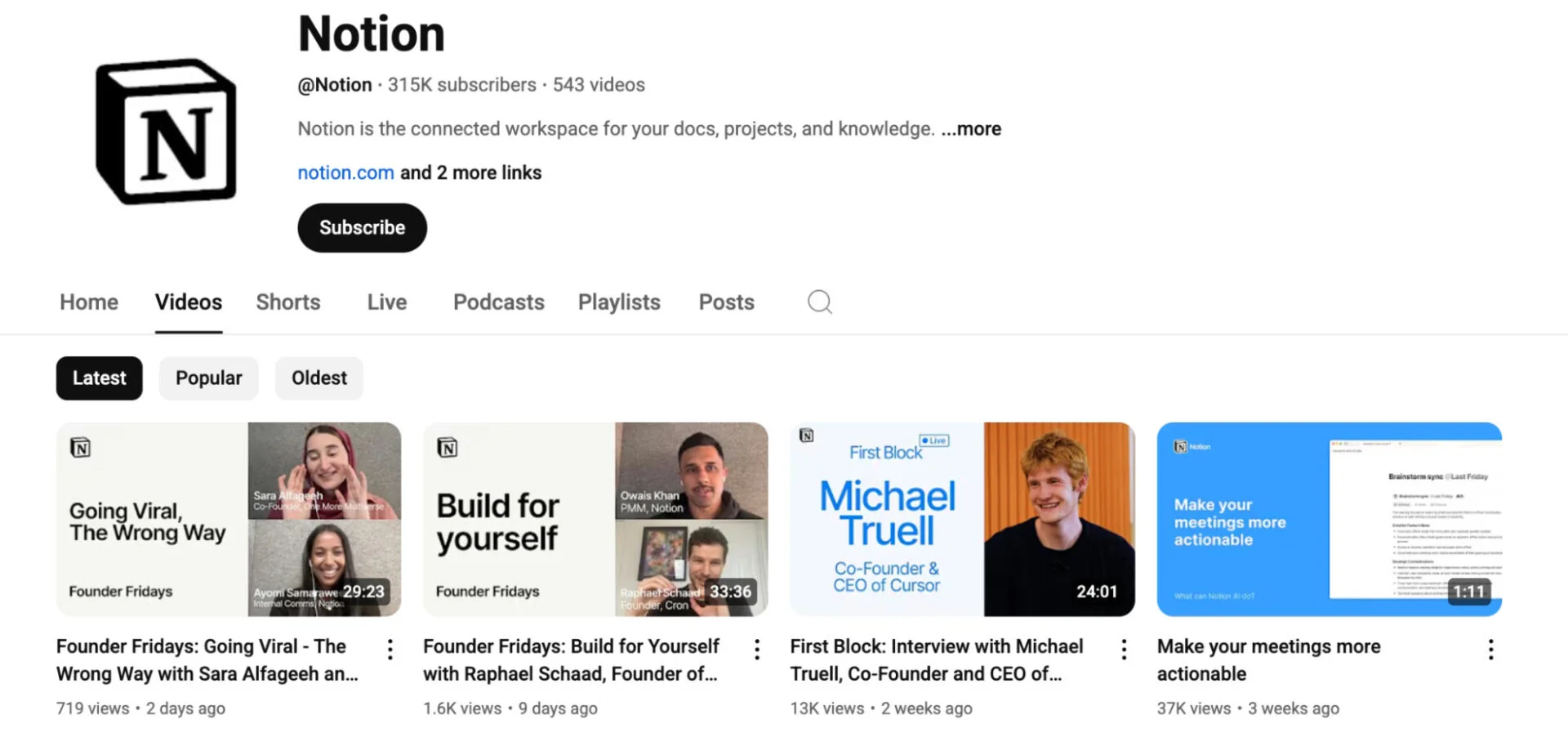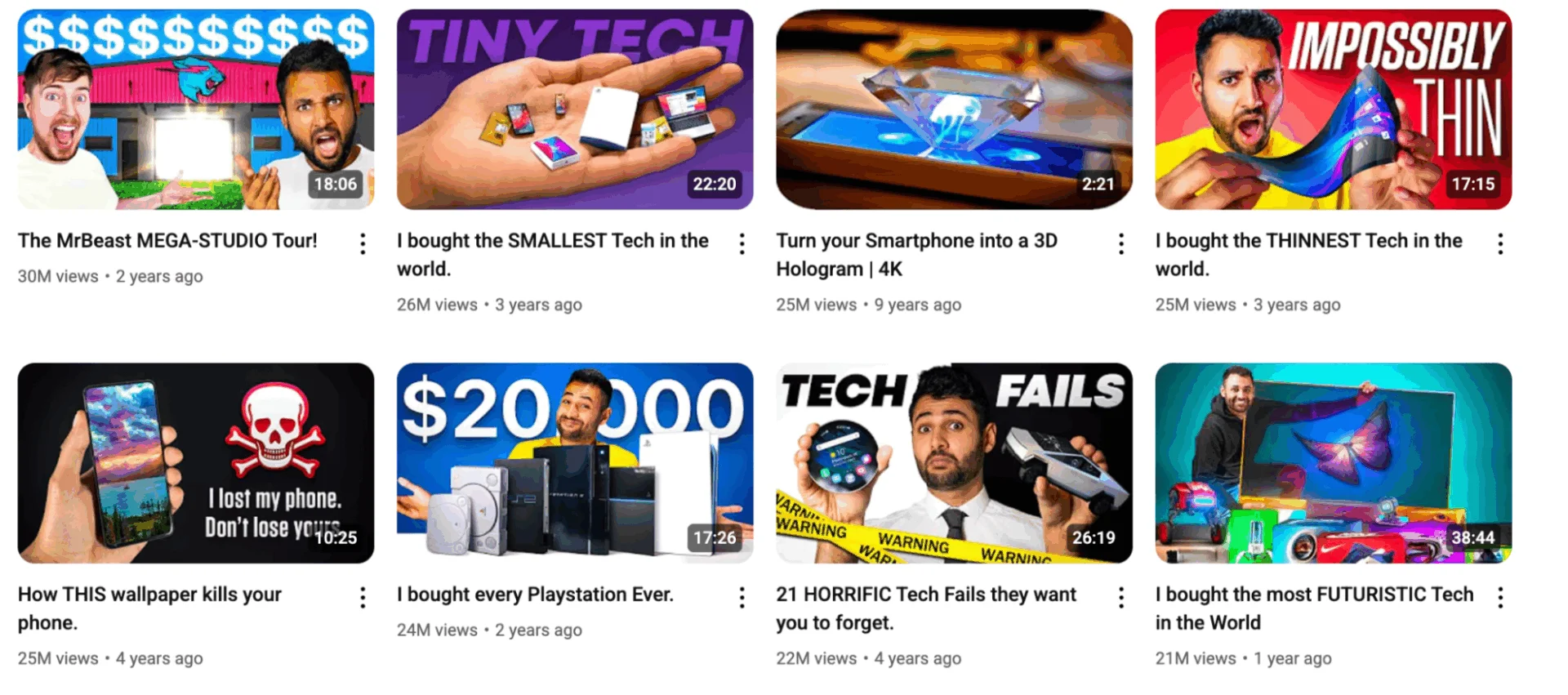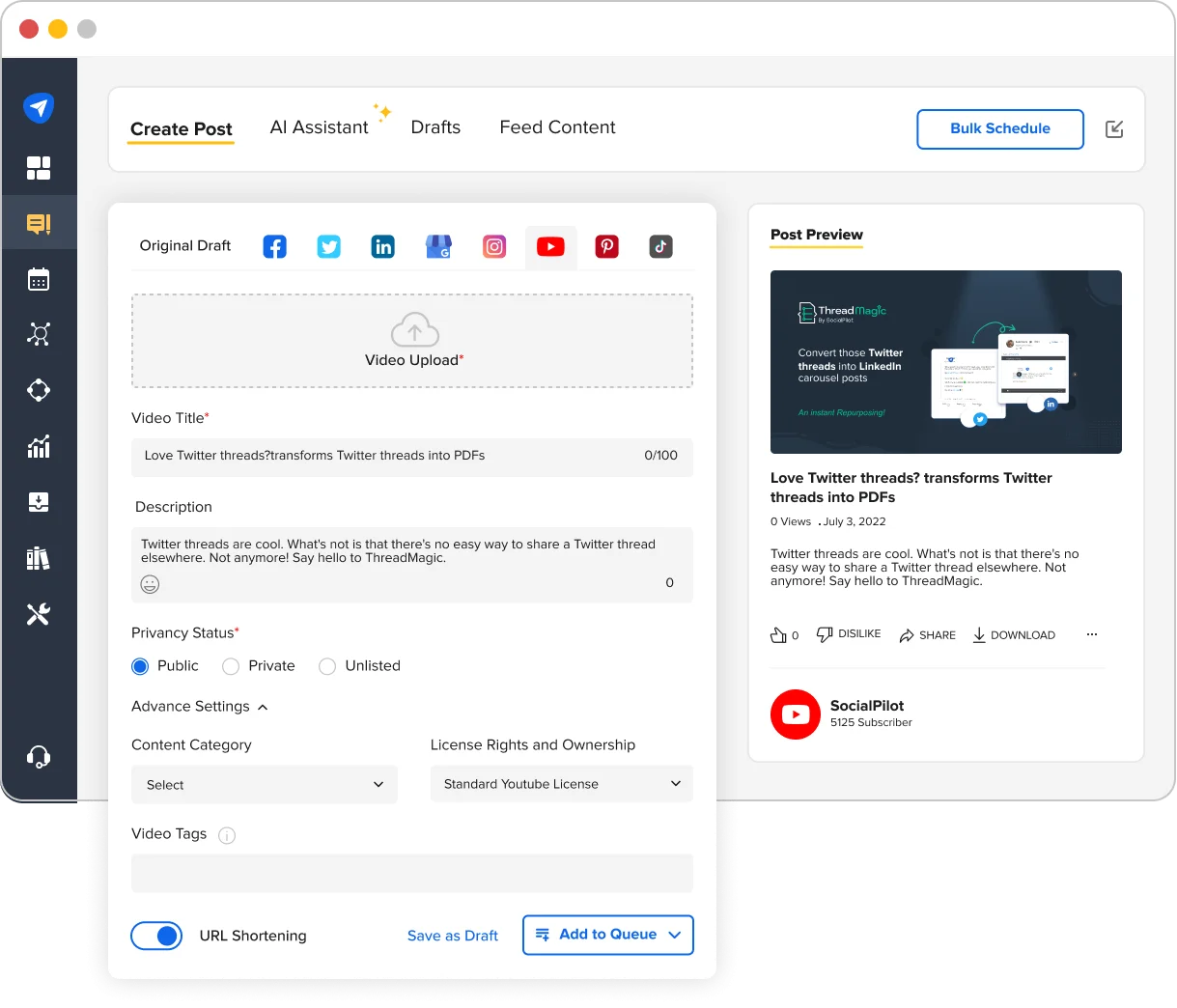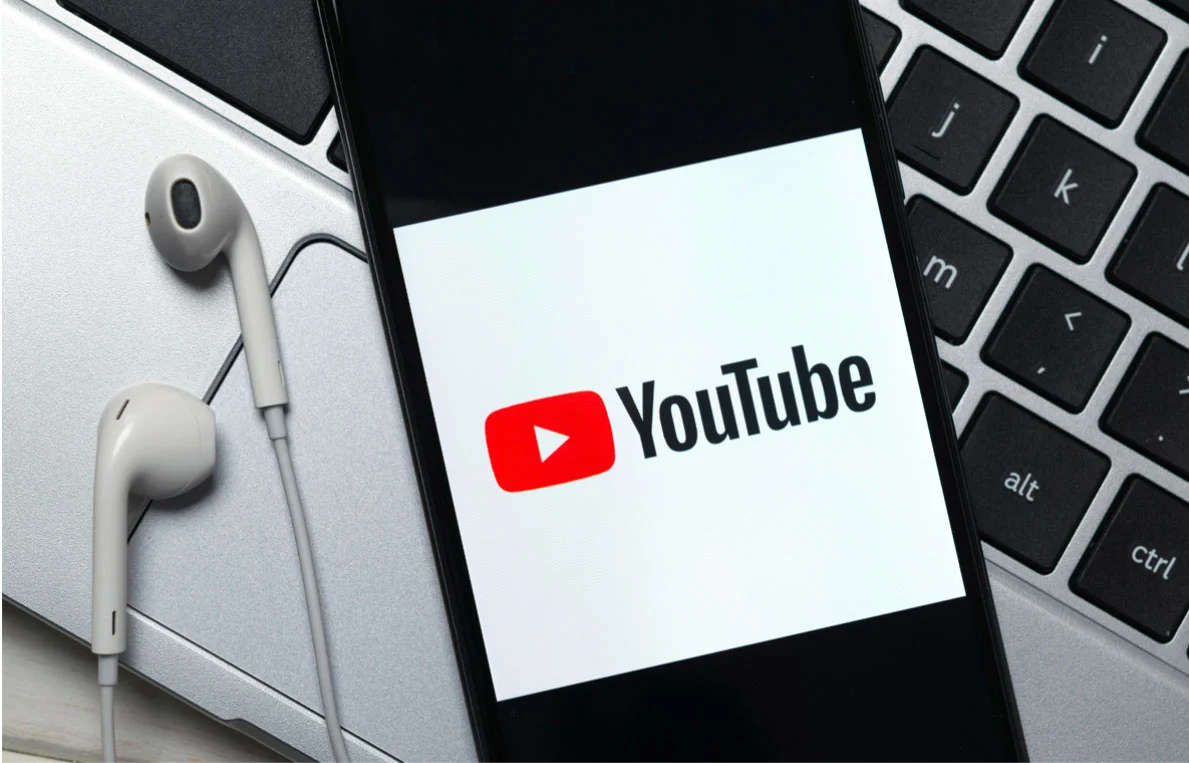Great content isn’t nearly enough to capture audience attention on YouTube.
What you need is insights. And analyzing your competitors is the best way to get it. What is your target audience searching for, what successful brands have done, and what they haven’t done, so you can leverage the content gap, and then use these insights to create impact.
That’s where YouTube competitor analysis comes in.
YouTube competitor analysis is so much more than chasing trends. It involves finding patterns, spotting gaps, and making content that connects before the algorithm buries you.
In this guide, we’ll walk you through the ropes of undertaking a successful YouTube competitor analysis to go from reactive to strategic and turn competitor data into growth fuel.
What is YouTube Competitor Analysis?
YouTube competitor analysis involves tracking competitors or other channels in your niche to understand their content strategy. This could include auditing content to find what themes, formats, lengths, titles, keywords, or other aspects grab audience attention and emulate or do it better for your brand. It also enables you to identify gaps in competitor content that you can fill with your content.
How Do You Analyze a YouTube Competitor?
There are many ways to embark on a YouTube channel competitor analysis, but in the steps below, we show you the smartest and easiest ways to leverage competitor strategy to build a plan of your own:
1. Identify Your YouTube Competitors
Your YouTube competitors may not be the same as your business competitors. Direct competitors may offer the same products or services to a similar audience, while indirect competitors fulfill similar needs with different offerings. You need to track competition on YouTube based on audience, themes, and keywords. To start:
- Search the main keywords on YouTube and list the top 5 channels ranking for them. For example, if your focus is SEO and content marketing, you’ll likely see Neil Patel or Ahrefs show up.
- Find out who is bidding on the same or similar keywords or targeting a similar audience.
- Use YouTube competitor analysis tools like Channel Crawler to find channels based on topic and audience size.
- Check the ‘Channels’ tab under your competitor’s YouTube profile to see who they feature or follow.
This will give you a starting point, not to copy, but to understand.
Tip: Use prompt-based AI tools like ChatGPT or Claude for quick results. For eg, a prompt like “List top YouTube channels in the [niche/topic] space based on popularity and engagement. Include 5 direct and 3 indirect competitors with short descriptions, which could give you a quick overview to start with.
2. Review Their Channel Overview
Once you’ve identified your competition, analyze their positioning on the channel.
- Check their banner, profile picture, and overall style.
- Read the ‘About’ section to see how clearly they describe their niche and target audience.
- Scan their homepage layout to get a feel of how their content is featured and how it is organized.
- Check their subscriber count to gauge their reach.
- Analyze their posting schedule.
This will give you insights about their branding, audience, and reach, which you can then use to refine your own channel and boost growth.
For instance, if you are a company focused on food or affiliated products, the YouTube channel Made With Lau, which focuses on teaching Cantonese cooking, could be worth studying.

The channel’s banner features a bright photo and a clear tagline. The description below succinctly describes their mission statement: to preserve Cantonese culture through cooking. With over 1.7 million subscribers, the channel maintains a consistent posting schedule and is organized neatly into playlists. This could provide a blueprint of what you may be looking to do with your own brand.
3. Analyze Performance and Audience Feedback
Even without access to another channel’s YouTube subscriber analytics, you can get a sense of its reach and engagement. Views, likes, dislikes, shares, and comments provide unfiltered feedback on how the audience perceives the content.
Comments in particular can also provide useful information on what kind of audience the channel attracts based on the tone, language, themes, and other cues.
- Look at the view counts on their last 10–15 videos to spot patterns.
- Check the like-to-view ratio for signs of audience relatability.
- Read through comments to understand viewer preferences.
- Check the most-shared or pinned videos.
- Use a tool like Social Blade to track subscriber growth and recent upload activity.
These insights are important not just for better content creation but also for attracting the right kind of audience to your own channel. You can refine your strategy and brainstorm new ideas to increase your YouTube subscribers and reach.
Tip: Leverage prompt-based AI tools for quicker analyses. For instance, you can leverage AI to recognize sentiment, patterns, preferences, and the type of audience a channel attracts.
- Copy the top comments and use a prompt like “Summarize what the overall sentiment seems to be based on the tone, feedback, and interests in these comments.”
- Use follow-up questions like “What are the top 3 viewer needs or frustrations reflected in these comments?” for deeper insights.
4. Study Format, Hooks, and Presentation Style
How a video is framed, paced, and presented plays a big role in stickiness and clicks. For instance, 90% of top-performing videos use custom thumbnails. This demonstrates clearly that the devil is in the details. By studying a channel, you can understand:
- How grouping videos into types like tutorials, commentary, reviews, Shorts, or live streams impacts engagement
- Note if the content is scripted or spontaneous, and whether they use visuals, voiceovers, or B-roll
- Track the average length and pacing
- Look at thumbnails for common traits like bold text, facial expressions, or brand colours
- Check their call-to-action and how each translates into likes, comments, subscriptions, or external links
5. Analyze The Texts
Titles and metadata are just as important as the video content itself. Not only does text optimization improve discoverability as part of YouTube SEO, it also tells your viewer a little about the content they’re about to consume. Your video’s success starts before anyone even clicks on it, which is why you must:
- Review top-performing video titles to look for patterns in tone, structure, and keyword use.
- Check whether competitors use curiosity, urgency, or specific combinations to get clicks.
- Compare description styles: are they short, or do they include links, timestamps, and added value?
- Use tools like TubeBuddy or vidIQ to uncover which tags they’re using regularly.
- Alternatively, you can find a YouTube video’s tags by right-clicking on the page, selecting “View Page Source”, pressing CTRL + F (or Command + F on Mac), searching for keywords, and checking the meta tags.
- Also check for closed captions, chapters, or playlists.
Take, for example, Notion’s YouTube channel. These videos use benefit-driven titles with focus on keywords that their users would prioritize. The description includes relevant links, timestamps, and CTAs.

Tip: Try writing your video descriptions using tools like free YouTube video description generator to make it more impactful and valuable. It enables you to generate high-converting video titles and descriptions using templates for tone and style.
6. Use YouTube Competitor Analysis Tools to Dig Deeper
While YouTube’s native analytics can give you some data to go by, specialized tools can help spot trends you might otherwise miss. Once you’ve identified your key competitors, it’s worth setting up systems that keep an eye on their content automatically.
- Use TubeBuddy or vidIQ to track keyword usage, tags, and SEO scores across multiple videos.
- Set up alerts or saved searches to monitor when competitors post new content or shift their strategy.
- Check Social Blade for subscriber trends, upload frequency, and growth over time.
- Use Channel Crawler to discover other channels by niche or audience size
Recommended Tools for YouTube Competitor Analysis
| Tool | What It Does | Best For |
| TubeBuddy | Tracks keywords and suggests tags | Video SEO and optimisation |
| vidIQ | Compare channels and shows real-time trends | Competitor tracking and performance analysis |
| Social Blade | Shows growth, uploads, and view history | Spotting trends and growth patterns |
| Channel Crawler | Finds channels by niche and audience size | Discovering new competitors |
| Morningfame | Analyses video performance with clear insights | Beginners optimising titles and thumbnails |
| Ahrefs | Finds YouTube keywords with volume and difficulty | Advanced SEO planning and competitor keywords |
| Google Trends | Shows trending searches over time | Spotting rising topics and comparing interests |
These insights are essential not just for better content creation but also for attracting the right audience to your channel. To ensure you’re building a strategy that resonates, leverage a strong YouTube content strategy guide, drawing on expert tips from a comprehensive YouTube marketing guide.
How to Turn Analysis Into an Actionable Strategy
So, you’ve done the research. You’ve looked at what your competitors are posting, how they’re performing, and where they’re getting it right. Now what? These next steps will help you put that analysis to work.
1. Leverage the Content Gap
Once you’ve reviewed a few competitor channels, you’ll start to notice patterns. You’ll see what they focus on and, more importantly, what they leave out. And that’s your window of opportunity. These are topics your audience is searching for that haven’t been covered well—or at all—by others. Try this:
- List the video topics your top 3–5 competitors focus on. Go through their last 30–50 uploads and note recurring themes. Group the topics by category (e.g., tutorials, reviews, opinion pieces).
- Identify what’s missing or underdeveloped. Look for keywords, formats, or viewer questions in the comments that haven’t been addressed thoroughly by others.
- Match those gaps with your expertise. Choose 2–3 topic ideas that align with your brand but haven’t been widely covered. Use them to create video outlines.
2. Refine Your Channel Positioning
It’s easy to get lost in a sea of similar content on YouTube. Suppose your channel looks and feels like everyone else’s. Viewers won’t remember it. Strong positioning helps you define who you’re for, what you offer, and why it matters—all in a way that stands out. Use what you’ve learned from others to sharpen your own channel’s identity.
- Write down how each competitor describes itself. Look at their channel’s “About” section, intros, and banner text. Note their focus and the audience they seem to be targeting.
- Review your own branding and messaging. Ask yourself: Does your channel clearly explain who it’s for and what it offers? Are you saying the same thing as everyone else?
- Then, differentiate. Go deep into a niche topic, speak to a more specific audience (e.g., beginners vs. pros), or use a distinct tone (educational, humorous, behind-the-scenes) to set your content apart.
Take Rihanna’s Fenty Beauty as an example. While other cosmetic brands do tutorials and GRWM videos, Fenty has distinguished itself as a brand focused on inclusivity, and its content reflects that. This kind of clarity can help your channel attract the right viewers and set you apart, even in a crowded space.

3. Improve Thumbnails, Titles, and Hooks
As mentioned above, a video’s title, thumbnail, and opening hook are three elements that decide whether someone stops scrolling or keeps going. If your competitors are getting more views with similar content, chances are their first impression is stronger. To improve your own package, you can start with this:
- Save 10–15 thumbnails from your top competitors. Look at how they use text, faces, colour contrast, or branding. Which ones grab attention right away?
- Compare their titles to yours. Are the titles short and punchy, or longer with added context? Try rewriting a few of your own using their format.
- Watch how they start their videos. The first 5–10 seconds often include a teaser, a big claim, or a question that keeps people watching.
One example is the Mrwhosetheboss tech review channel. While many creators post phone reviews, his thumbnails usually feature his face with a shocked or curious expression, bold text like “This Changes Everything,” and a clean background. These small details push more viewers to click, even when the content is similar to others.

4. Optimize Publishing Schedule and Frequency
How often you post and when affect video performance. Competitors are a good reference point if they post consistently and grow steadily. You don’t need to match their schedule exactly, but having a reliable schedule for posting that works for your audience and capacity can improve your own performance.
- Track when your competitors publish their videos. Note the days of the week and the time of day they usually post. Do this for 2–3 weeks to find a pattern.
- Use YouTube Analytics to check when your audience is most active. If your channel is new, follow competitor patterns until you have enough data of your own.
- Set a schedule you can stick to. Consistency is more important than volume. Once a week beats three times in one week, followed by silence.
Popular filmmaker and productivity YouTuber Matt D’Avella built his early audience by uploading videos every Sunday without fail. He cracked the code on how often to post by building a predictable routine that viewers came to expect. Over time, that consistency became part of his brand—and a key factor in his channel’s growth.
Need a leg up to streamline your YouTube publishing? Use SocialPilot’s Automated YouTube Scheduler. With this handy tool, you can queue, schedule, or instantly post YouTube videos and shorts that will help you maintain a consistent posting schedule.

5. Adjust Video Structure and Format
It’s not just what your competitors talk about—it’s how they deliver it. The structure of a video can directly impact viewer retention. Strong openers, well-paced sections, and clear endings with calls to action can all improve how long people watch. Format also plays a role—whether it’s a tutorial, case study, or a YouTube Short.
By observing how others shape their videos, you can refine your content flow to keep viewers engaged for longer.
- Watch 3–5 high-performing videos from each competitor. Pay close attention to how they open (first 30 seconds), how the content is structured, and how they wrap up.
- Time the transitions. Do they switch scenes every 30 seconds? Use on-screen text? Add B-roll or screen recordings? These cues help you adjust your pacing.
- Test different video formats. If your competitors rely only on long-form content, experiment with Shorts, behind-the-scenes videos, or live Q&A sessions to see what resonates with your audience.
If you’re losing viewers early or getting low average watch times, adjusting your structure and testing new formats can make a measurable difference.
Tip: Creator Insider shared that videos with strong narrative flow and regular visual changes every 20–30 seconds tend to retain viewers better. They also highlighted the success of creators who break longer videos into clearly labelled segments using on-screen graphics or timestamps. Consider incorporating this into your strategy.
6. Apply Insights to Your Own Analytics
YouTube competitor analysis is only the starting point. The real work happens when you apply what you’ve learned to your channel—and then track results. Treat your social media analytics like a feedback loop. Use them to see what’s working, what’s not, and what needs to change.
- Review your top-performing videos. See how they compare to the content trends and tactics. Look at how your use of hashtags impacts discoverability. Tools like a YouTube hashtag generator can help you find relevant and trending hashtags for your niche.
- Track changes after you make updates. If you improve your titles or change your publishing schedule, track how it affects YouTube subscribers, click-through rate, watch time, audience retention, and over the next few weeks.
- Use YouTube’s Advanced Mode in Analytics. Segment your data by video type, source of traffic, and viewer behaviour. This will help you go deeper than surface-level stats.
The best strategies don’t come from copying others. They come from learning, applying, and improving based on your audience data.
Stay One Step Ahead Always
YouTube competitor analysis isn’t about copying a competitor’s strategy page for page. It’s a learning process to understand from others’ successes and failures—what works, what’s missing, and what can be done better or differently.
When you regularly analyze other channels, spot content gaps, and make small, steady improvements to your videos, your strategy becomes more focused. Thumbnails contribute to more clicks. Watch time improves. And over time, your channel better reflects what your audience is looking for.
Progress like this doesn’t come from one-off research. It’s the result of consistent analysis and ongoing adjustments. Treat your channel like a system, and the results will follow. For those looking to streamline their YouTube content strategy and scheduling, tools like SocialPilot offer intuitive solutions to manage and optimize efforts with ease. Check out our pricing plans for more details.




